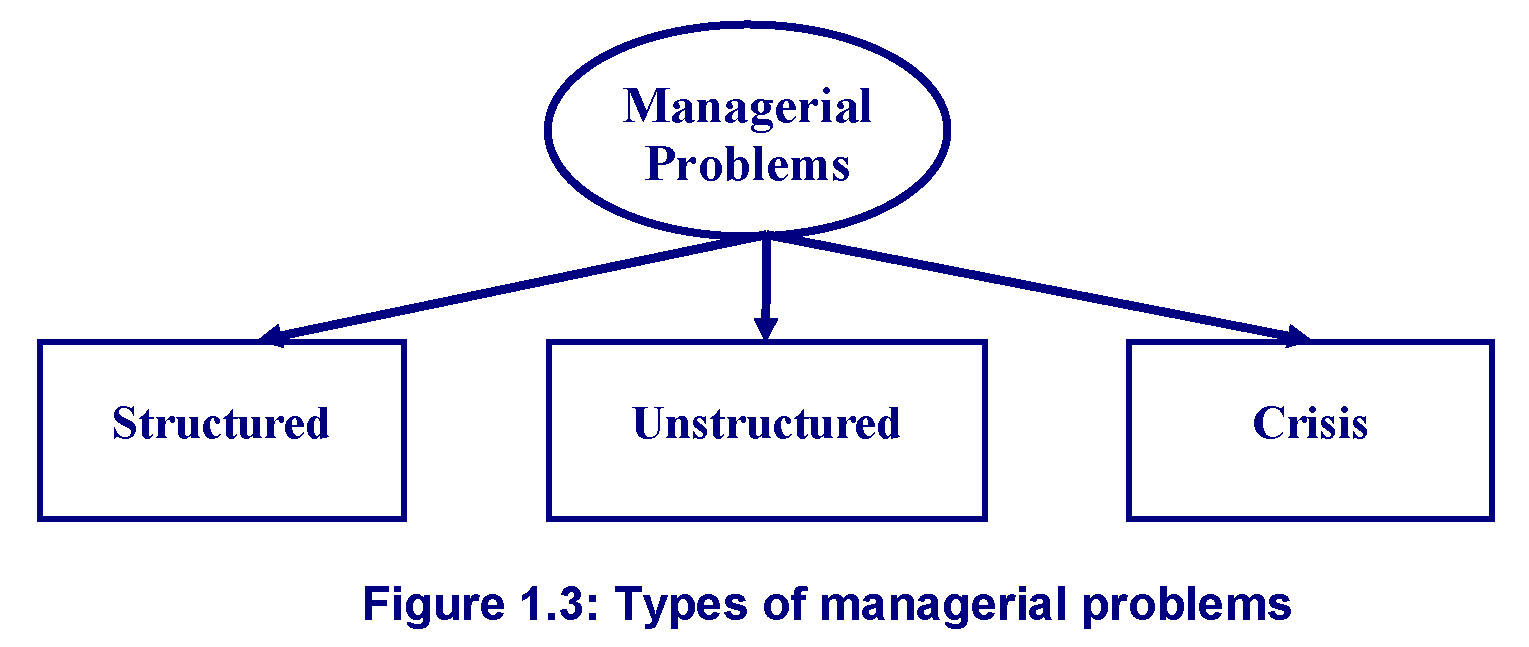|
1.4 Types of Managerial Problems
The problems which mangers face are
usually classified into 3 main types, as shown in Figure
1.3:
a-
Structured problems,
b-
Unstructured problems,
c-
Crisis problems
Figure
1.3: Types of managerial problems

1.4.1 Structured Problems
These are familiar, straightforward, and
clear with respect to the information needed to resolve them.
They can be expected, and managers can plan ahead and
develop specific ways to deal with them, or even can take
action to prevent their occurrence.
1.4.2 Unstructured Problems
Involve ambiguities and information
deficiencies,
and often occur as new or unexpected situations. They
usually require novel solutions.
1.4.3 Crisis Problems
A crisis problem is an unexpected problem
that can lead to a disaster if not resolved quickly and
appropriately. Managers are installing ”early-warning”
crisis information systems and developing crisis
management plans to deal with them in the best possible
ways.
There is a clear relationship between the types of
managerial problems and the decisions applicable to each
type; as shown in Figure 1.4.
Figure 1.4: The relationship between types of managerial
problems and managerial decisions

|
![]() Problem Solving and
Decision Making(1)
Problem Solving and
Decision Making(1)
![]()